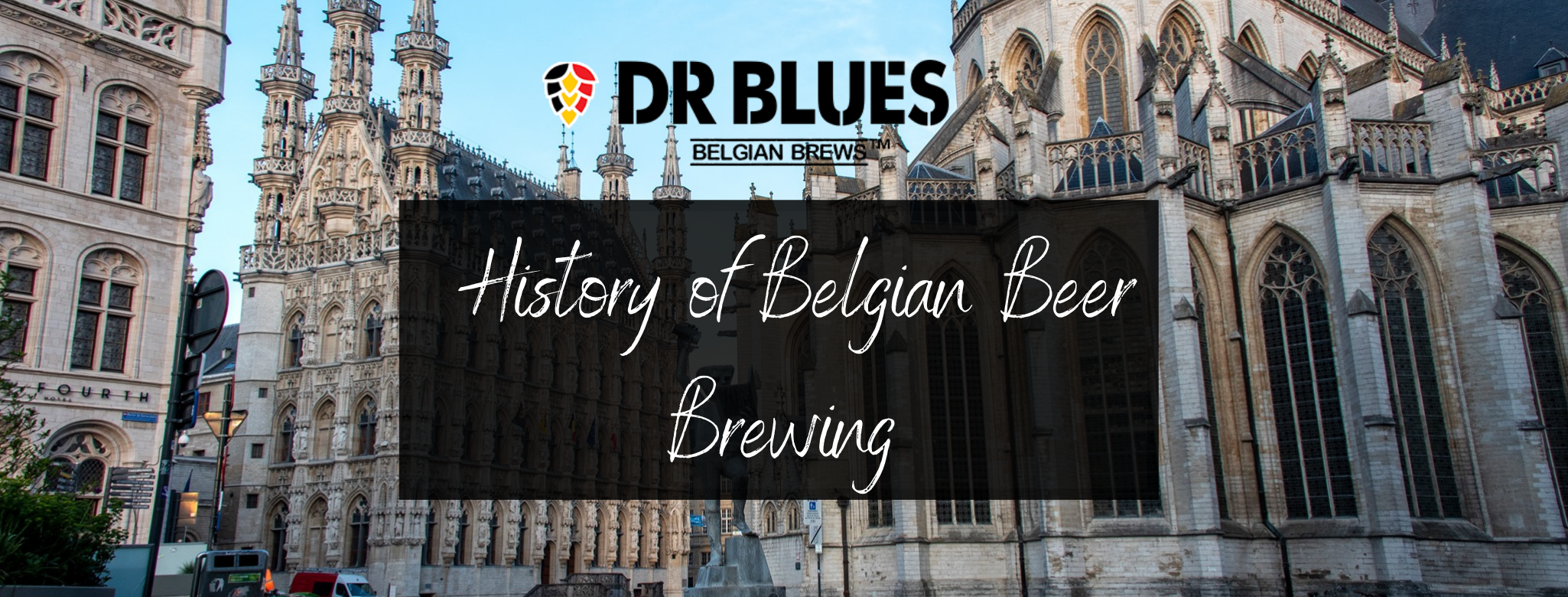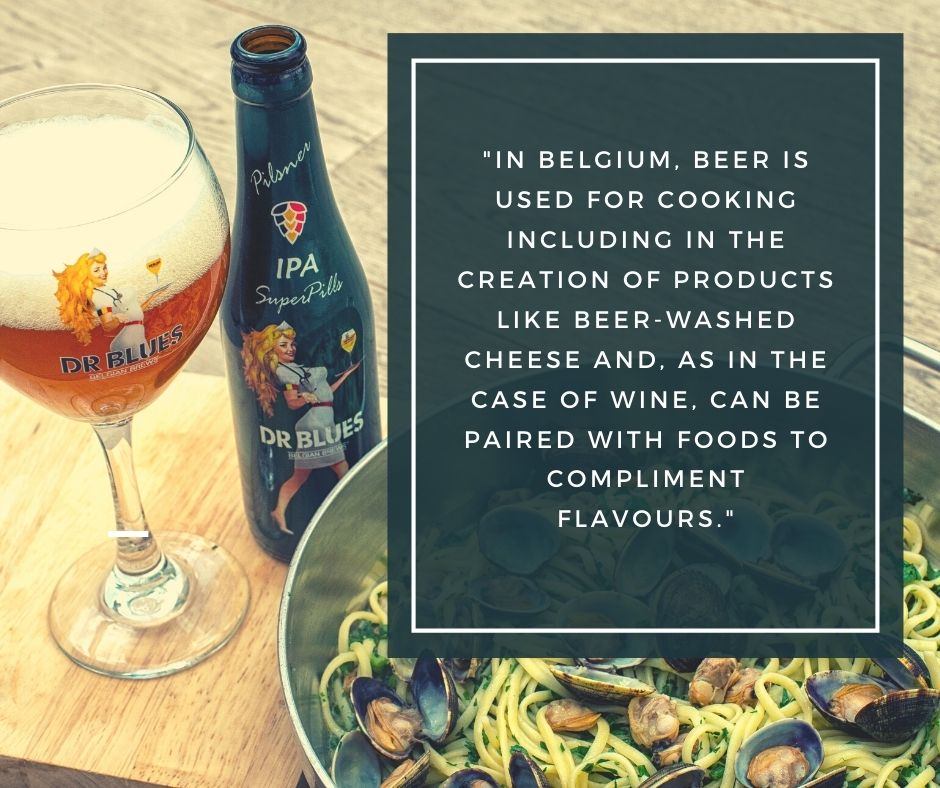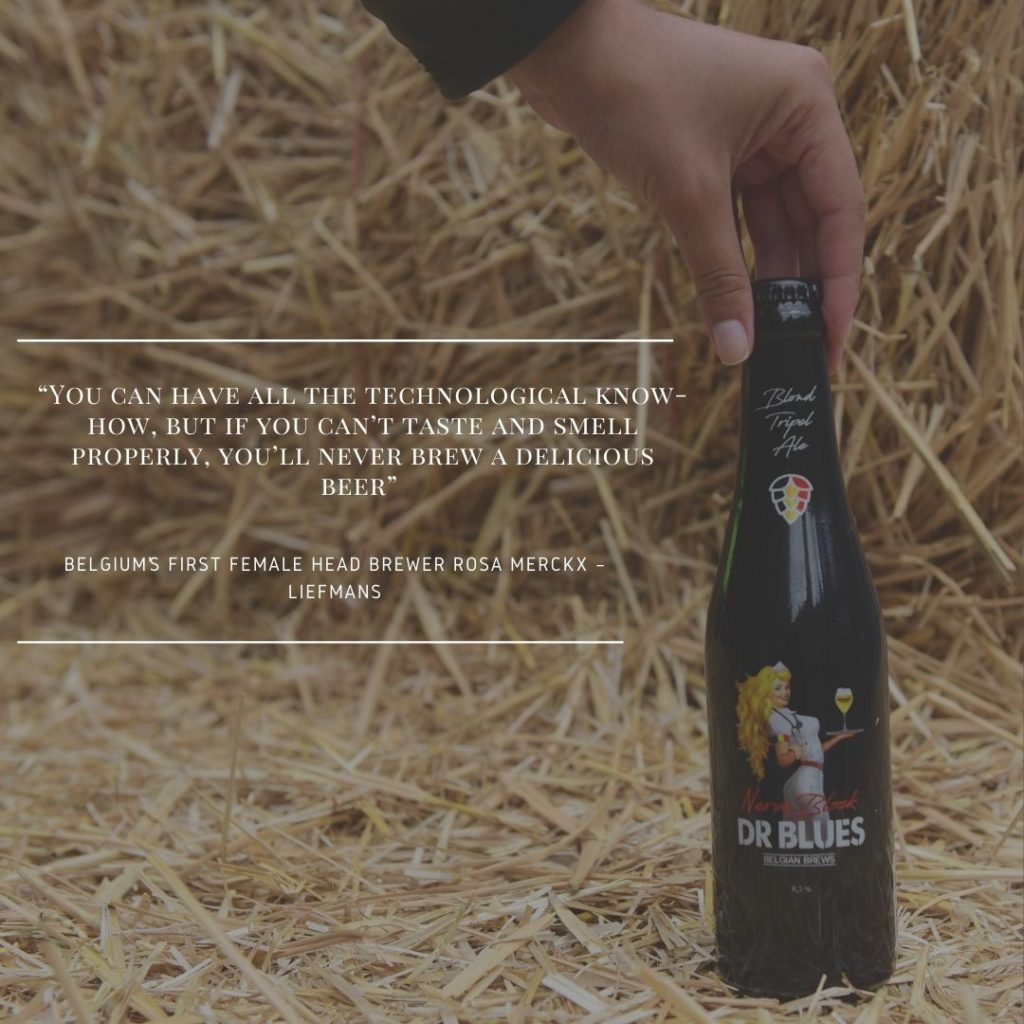Cultural Tips – Beer is Belgium, Belgium is Beer
Posted in Blog

In Belgium, brewing is a centuries old tradition. The history of the amber nectar here can be traced back to the monks and nuns in the Middle Ages who were some of the earliest brewers. Drinking water was often very unsanitary and made people ill, so most people – including monks and even children – drank a weak table beer instead. Unknowingly, it was the brewing process itself that killed many of the germs. Once the beer was brewed, the monks would also add flavour with a herbal mixture called gruit or add hops which acted as an effective preservative.
To say that ‘beer is to Belgium what wine is to France’ is something of an understatement. While Belgium contributes just 1% of global beer production, it brews 10 times more per head than the global average. And though, at around 2 billion litres a year, it’s not the biggest brewer in Europe (that top spot being held by Germany), it certainly wins out on the diversity and versatility of its beer culture.
That’s something recognised globally. Almost two-thirds of Belgian beer production is destined for export. From that point of view Belgium is undoubtedly the European champion. But what defines Belgian beer culture, making it so unique that it has been recognised as UNESCO World Heritage?
First and foremost, the sheer number and diversity of traditional Belgian beer styles, from abbey beer to lambiek. Belgian Beer Styles have a seemingly endless variety of brewing process, colour, texture, method of fermentation, yeasts used and of course the knowledge and tradition that goes in to brewing them.

Beer – the world’s most widely consumed alcohol beverage and the third most popular drink after water and tea. The first recorded sale of beer (a brown beer) was on June 1, 1861.Making and appreciating beer is part of the living heritage of a range of communities throughout Belgium. It plays a role in daily life, as well as festive occasions. Almost 1,500 types of beer are produced in the country using different fermentation methods. Since the 80s, craft beer has become especially popular. In addition, beer is used for cooking including in the creation of products like beer-washed cheese. As in the case of wine, can be paired with foods to compliment flavours. Several organizations of brewers exist who work with communities on a broad level to advocate responsible beer consumption. Sustainable practice has also become part of the culture with recyclable packaging encouraged and new technologies to reduce water usage in production processes. Besides being transmitted in the home and social circles, knowledge and skills are also passed down by master brewers who run classes in breweries, specialized university courses that target those involved in the field and hospitality in general, public training programmes for entrepreneurs and small test breweries for amateur brewers. Today the brewing industry is enjoying a real revival. Traditional production methods that were handed down from generation to generation, are systematically being complemented and strengthened by the latest technological know-how and scientific developments. The Belgian beer tradition lives on in young, passionate brewers, trendy microbreweries and a new generation who are keen on homegrown beer.
More than just Tradition
Besides the beers and brewing itself, beer is never far from you in Belgium. There are several beer museums to be found across the country, and It is even said that the ‘saint of beer’, St. Gambrinus, is buried in the capital, just metres away from the Brewers House. The country has a beer festival almost every week of the year, attracting visitors in their thousands, while clubs of beer fanatics gather in most cities and villages. Plus some of the world’s top beer specialists are Belgian. Brewing in this country also goes back a very long time, with its history politics and religion always being closely interwoven with the changing story of beer.
That’s vividly reflected today in the ceremonial Knighthood of the Brewer’s Mash Staff, held each year on the Belgian Beer Weekend, which appoints new honorary knights who have proven themselves as true Belgian beer ambassadors.
But let’s travel back in time to the beginning, and take a whirlwind journey through the history of beer in nation of the Belgae. In the Gallo-Roman era (3rd-4th century AD) brewing was very much a woman’s craft. You’ll find remains of villas showing traces of domestic brewing activity in Ronchinne, Anthée and Mette. Until the early Middle Ages, ‘gruut’ or ‘gruit’ was a fundamental part of the brewing process.
This was a jealously guarded secret herbal mix which could include myrica, sage, rosemary, achillea, bay, juniper berries, caraway, aniseed and resins, among other ingredients. The secular breweries of the time were in the hands of powerful brewery guilds, but in time many small home breweries sprang up on the banks of rivers and streams.
A steady and close-by water supply was, and still is, essential to the brewing craft. These beers were dark in colour and unfiltered – and the wild yeasting process was often not very well managed.
It was the abbeys and nunneries that helped to take the quality of beer to a higher level. In 974 the German Emperor Otto II granted the first ‘gruitrecht’ (gruit rights) to the small town of Fosses-la-ville. Hops made gradual inroads as brewers discovered that they prevented the beer from going sour and improved its keeping qualities. German abbess Hildegard von Bingen provided a detailed description of the workings of hops in the 12th century. In the 13th century, the first hopped beers took sail from Bremen to Bruges. Others took different brewing paths. In and around Brussels, in the ‘Pajottenland’ region, beers were brewed using wild yeasts, a process particular to the valley of the Zenne. This gave rise to the regional geuze beers and other fruity varieties such as ‘kriek‘.
Belgian Beer Varieties
Belgian beer was made long before Belgium became an independent country; it is believed that it started even before the First Crusade. The French and Flemish brewed beer to raise money. At that time, the people drank beer more often because of the unsanitary condition of the available drinking water. Over the next several centuries, traditional brewing methods slowly evolved into what they are now. Trappist beers are brewed in Trappist monasteries. There are very specific rules for what qualifies as a Trappist beer (there is a certain certification for it). The rules are as follows: the brewery must be a monastery, monks must play a role in its production, and profits from the sale must be used to support the monastery or other social programs outside of it.
There are many types of Belgian beers, but the two most popular are Trappist beers and Abbey beers. The first Trappist brewery in Belgium (Westmalle) did not actually start its production of beer until the end of 1836, which was almost 50 years after the French Revolution. Westmalle was exclusively for monks and is described as ‘dark and sweet.’
Known for their strength, sourness, complexity and bitterness, Belgian beers are brewed in surprisingly diverse ways. For example, spontaneous fermentation allows the brewer to use the cool outside air around the hopped wort to ferment instead of using yeast.

Did you know Belgium has around 1,500 beer brands and more than 700 different taste profiles? From Pils and Trappist beers to Flemish Red Ales and geuze: Belgian beer diversity comes in all colours, flavours and alcohol percentages. From high and low to spontaneous and mixed fermentation, from light to dark and from fruity to sour … there’s something for everyone.
The Belgian Beer Glassware
The top Belgian beers are known for being served in special glasses that give them a unique touch. Belgian bartenders take their job very seriously, and you might be shocked to see their reaction if a specific beer is served in a different glass than the original. Most of them will take it upon themselves to apologize for the inconvenience.

Several different types of glasses are used. One of the most popular is the tulip glass. Tulip glasses help give beer a special aroma, trapping it inside. The glass itself is shaped as the name suggests, as a tulip. It starts with a round bottom (shaped like a circle), flaring out toward the end. Another type of glass is one that is similar to a champagne flute and is usually used for serving Belgian lambics and fruit beers. Flute glasses help display the vivid color and active carbonation of this special style. On the other hand, there are goblets and chalices, which are strong, captivating, heavy bowl-shaped glasses that are mainly used for Trappist and Abbey beers. The difference between the goblet and the chalice glasses is usually the thickness. Chalices are heavier and thick walled rather than thin and elegant, or fragile, like the goblets.
Beer is Belgium, Belgium is Beer
Traditions, and the passing on of trade secrets from father to son, have created a unique Belgian beer culture. After two hugely destructive world wars on its territories, and many years of consolidation in the industry, there are still more than 150 active breweries remaining in Belgium.
The majority of large and medium sized breweries have joined the Federation of Brewers. But there are also dozens of hobby and micro brewers who usually operate on a local level. Many of these manage to do quite well, these days, thanks to the possibilities offered by the export of Belgian beers.
But we’re talking about more than just the beer. Belgian beer culture has given birth to a refined beer cuisine. Restaurants now offer a wide choice of beers, use beer in their dishes and serve carefully selected beers with the meal – beer pairing is on a par with the science of selecting wine to accompany your food.
You’ll not only be able to experiment endlessly when tasting, but also find out which beer you prefer to have with your starter; which with a particular Belgian cheese; or which to accompany the main course or dessert. In this, Belgian beers are again somewhat unique. They make for the ideal accompaniment because they come in such a wide range and offer subtle – rarely overpowering – aromas and tastes.
Source: www.beertoursm.com; www.globalbeer.com

